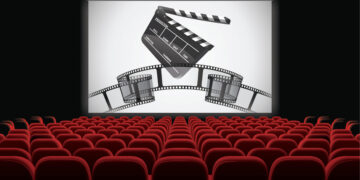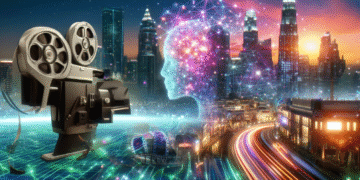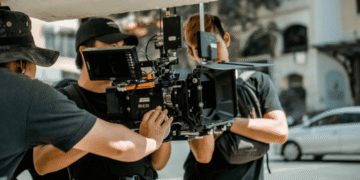Understanding Pre-Production: Planning the Blueprint of a Film
Pre-production is the crucial initial stage of filmmaking, laying the groundwork for a successful project. It’s where ideas take shape, logistics are planned, and the overall vision is solidified before a single scene is shot.
1. Script Breakdown and Storyboarding
The script breakdown involves analyzing the screenplay to identify all the elements needed for each scene, such as props, costumes, locations, and cast members. This detailed analysis informs the budget and schedule. Storyboarding visually maps out the film, scene by scene, using drawings or sketches. This helps the director and crew visualize the shots and plan camera angles, movement, and composition. The script and storyboards are essential communication tools ensuring everyone involved understands the artistic direction.
2. Budgeting and Scheduling
Creating a realistic budget is vital. This involves estimating the costs of everything from equipment rental and location fees to actor salaries and post-production services. The budget dictates the scope and scale of the film. Concurrently, a detailed shooting schedule is created, outlining the order in which scenes will be filmed and the time allocated to each. This schedule considers factors like location availability, actor schedules, and weather conditions. Careful budgeting and scheduling prevent overspending and delays.
3. Casting and Location Scouting
Casting involves finding the right actors to portray the characters in the script. This can involve auditions, screen tests, and negotiations with agents. The casting process is crucial for bringing the story to life. Location scouting involves finding suitable places to film the scenes. This requires visiting potential locations, assessing their suitability, and obtaining the necessary permits. Location scouting ensures that the film has the right visual backdrop and logistical feasibility.
The Art and Science of Scriptwriting: Crafting Compelling Narratives
Scriptwriting is where the magic of filmmaking begins, blending artistic vision with technical precision to create stories that captivate audiences. It’s a challenging but rewarding process that demands creativity, discipline, and a deep understanding of narrative structure.
1. The Foundation: Idea Generation and Concept Development
The initial spark of a film often comes from an idea, which can be inspired by anything from personal experiences to current events. Scriptwriters then develop this idea into a compelling concept, fleshing out the basic premise, identifying the core themes, and creating a logline – a concise summary of the story. This stage requires brainstorming, research, and a clear understanding of the target audience to ensure the concept has potential.
2. Structuring the Narrative: From Outline to Treatment
Once the concept is solid, scriptwriters create a detailed outline, mapping out the major plot points, character arcs, and key scenes. This outline serves as a roadmap for the script, ensuring a cohesive and engaging narrative structure. The outline is then expanded into a treatment, a more detailed prose version of the story, which includes scene descriptions, character interactions, and dialogue snippets.
3. Dialogue and Character Development
Crafting believable and engaging dialogue is crucial for bringing characters to life and advancing the plot. Scriptwriters must consider each character’s background, motivations, and relationships when writing their lines. Effective dialogue should sound natural, reveal character traits, and contribute to the overall narrative. Strong character development involves creating complex, multi-dimensional characters with clear goals, flaws, and motivations that drive their actions.
Storyboarding Techniques: Visualizing the Film’s Journey
Storyboarding is a crucial pre-production process where filmmakers create a visual roadmap of their film, scene by scene. It helps to plan shots, camera angles, and overall composition before filming begins.
| Storyboard Element | Description | Purpose |
|---|---|---|
| Panel | A single drawing representing a shot or scene. | Visualizes the action and composition of each shot. |
| Arrows | Indicate camera movement or character movement. | Shows the flow of action within a scene. |
| Text Notes | Brief descriptions of the action, dialogue, or sound effects. | Provides context and clarifies the visual information. |
| Camera Angle | Specifies the position of the camera in relation to the subject. | Determines the perspective and impact of the shot. |
| Shot Type | Defines the framing of the subject (e.g., close-up, wide shot). | Emphasizes certain aspects of the scene and guides the viewer’s eye. |
Data source: filmmakingstuff.com, 2024
1. Thumbnail Storyboards: Quick Visual Ideas
Thumbnail storyboards are small, rough sketches used for brainstorming and quickly exploring different visual ideas. They prioritize speed and quantity over detail, allowing the director and team to experiment with various shot compositions and sequences without investing too much time in each panel. This technique is particularly useful in the early stages of pre-production to map out the overall flow of the film and identify potential visual problems or opportunities. Using thumbnails ensures the team is aligned on the film’s visual narrative.
2. Detailed Storyboards: Refining the Visuals
Detailed storyboards take the thumbnail sketches to the next level, fleshing out each panel with more specific information about character placement, camera angles, and lighting. Artists often use references like photographs or even 3D models to create accurate and visually compelling representations of each shot. These detailed boards serve as a blueprint for the cinematographer and other crew members, helping them to understand the director’s vision and plan for the technical aspects of filming. They also aid in budgeting, as they provide a clearer picture of the resources needed for each scene.
3. Digital Storyboarding: Modern Tools and Techniques
Digital storyboarding software has revolutionized the process, offering filmmakers powerful tools for creating and manipulating storyboards on computers and tablets. These programs often include features like animation tools, sound effects libraries, and the ability to import 3D models, allowing for more dynamic and interactive storyboards. Digital storyboarding facilitates collaboration among team members, as boards can be easily shared and revised remotely. Furthermore, digital tools can help to pre-visualize complex scenes with visual effects, which streamlines the post-production workflow.
Filming Dynamics: Capturing the Vision on Camera
The process of filming is a complex dance between technology, artistry, and collaboration, aimed at translating a script into a visual narrative. It requires careful planning and execution to effectively capture the director’s vision.
1. The Role of the Cinematographer
The cinematographer, also known as the Director of Photography (DP), is crucial in shaping the film’s visual identity. They work closely with the director to decide on camera angles, lighting, and composition, ensuring that each shot contributes to the story’s overall mood and aesthetic. The DP oversees the camera and lighting crews, making technical decisions about equipment and techniques to achieve the desired look. Their expertise in visual storytelling is essential for creating a compelling and immersive cinematic experience.
2. Camera Movement and Framing
Camera movement and framing are powerful tools used to guide the audience’s eye and convey specific emotions. Techniques like panning, tilting, and zooming can create a sense of movement or reveal new information within a scene. Framing involves carefully positioning the camera and subject to create a visually appealing and meaningful composition. Close-ups can emphasize emotions, while wide shots can establish the setting. Effective use of these techniques enhances the storytelling and engages the viewer.
3. Lighting Techniques
Lighting is a fundamental element of filmmaking, used to create mood, highlight specific details, and shape the audience’s perception of the scene. Three-point lighting, a common technique, uses a key light, fill light, and backlight to illuminate the subject. Different lighting styles, such as high-key lighting (bright and even) or low-key lighting (dark and dramatic), can create vastly different atmospheres. The choice of lighting depends on the genre, the story, and the desired emotional impact.
Post-Production Magic: Editing, Sound, and Visual Effects
1. Editing: Weaving the Narrative
Film editing is more than just cutting and splicing scenes together. It’s the art of shaping the narrative, controlling the pacing, and creating emotional impact. Editors meticulously select the best takes, arrange them in a compelling sequence, and fine-tune the rhythm of the film. They use various techniques like jump cuts, montages, and cross-dissolves to enhance storytelling. The editor collaborates closely with the director to realize their vision and ensure the film resonates with the audience. This process involves not only technical skill but also a deep understanding of storytelling principles.
2. Sound Design: Crafting the Auditory Experience
Sound design is an often-underappreciated aspect of filmmaking, yet it plays a vital role in immersing the audience in the story. It encompasses everything from recording and mixing dialogue to creating sound effects and selecting music. Sound designers carefully craft the auditory landscape of the film, using sound to enhance the mood, create tension, and guide the viewer’s attention. They might use foley artists to create realistic sound effects or compose original music to underscore emotional moments. A well-designed soundtrack can elevate a film from good to unforgettable.
3. Visual Effects (VFX): Expanding the Realm of Possibilities
Visual effects (VFX) allow filmmakers to create worlds and scenarios that would be impossible to achieve through practical means. VFX artists use computer-generated imagery (CGI) and other techniques to add fantastical creatures, breathtaking landscapes, and explosive action sequences to films. Modern VFX is incredibly sophisticated, blurring the line between reality and imagination. The integration of real-time VFX workflows, leveraging technologies from the gaming industry, is accelerating the post-production process, allowing for faster iteration and more creative experimentation.
Distribution Strategies: Bringing Films to Global Audiences
1. Theatrical Release
Theatrical release remains a significant distribution strategy, especially for blockbuster films. A wide theatrical release can generate substantial revenue and create buzz, influencing subsequent distribution windows. It involves securing distribution agreements with cinema chains, marketing the film to attract audiences, and managing the release schedule to optimize performance. Theatrical windows are increasingly flexible, adapting to shorter release cycles before films become available on other platforms.
2. Streaming Platforms
Streaming platforms have revolutionized film distribution, providing instant access to a vast library of content. Films can be distributed through subscription-based video-on-demand (SVOD) services like Netflix and Disney+, or transactional video-on-demand (TVOD) services where viewers pay per title. Streaming offers global reach and personalized recommendations, but also poses challenges in terms of revenue sharing and discoverability. Independent filmmakers increasingly rely on streaming to bypass traditional distribution barriers.
3. Digital Distribution
Digital distribution encompasses various methods of delivering films directly to consumers online. Electronic sell-through (EST) allows viewers to purchase and download films, while TVOD offers rentals. Platforms like iTunes, Google Play, and Amazon Prime Video facilitate digital distribution. This strategy provides flexibility and convenience for viewers, while also offering filmmakers greater control over their distribution. Effective digital marketing is crucial for driving sales and rentals in this competitive landscape.
Q&A
Question 1: What is pre-production in filmmaking, and why is it considered crucial?
Answer: Pre-production is the initial phase of filmmaking where the groundwork for a successful project is laid. It involves planning and organizing all aspects of the film before shooting begins, including script breakdown, budgeting, scheduling, casting, and location scouting. It’s crucial because thorough pre-production minimizes costly mistakes and delays during filming, ensuring the project stays on track and within budget while maintaining artistic vision.
Question 2: What are the key components of scriptwriting, from initial idea to final draft?
Answer: Scriptwriting starts with idea generation and concept development, leading to a detailed outline and treatment. This is followed by crafting believable dialogue and developing complex characters. Crucially, the process involves multiple rewrites and revisions to refine the plot, dialogue, and character arcs, ensuring the script is polished and ready for production.
Question 3: How does storyboarding contribute to the filmmaking process? What are the different types of storyboards?
Answer: Storyboarding creates a visual roadmap of the film, scene by scene, helping plan shots, camera angles, and composition before filming. There are thumbnail storyboards—quick, rough sketches for brainstorming—and detailed storyboards, which provide more specific information for the crew. Digital storyboarding, using software, offers advanced features for collaboration and pre-visualization of complex scenes.






